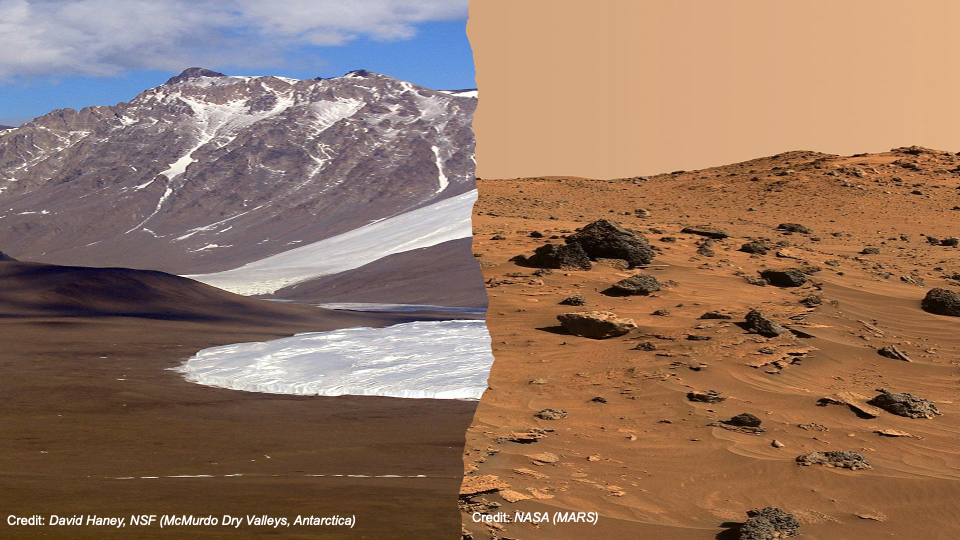If chemistry is the central science, then geochemistry is the central science as applied to understanding the natural world around us.
As such, geochemists seek to answer questions relating to the evolution of life on Earth and how metalloenzymes may have evolved, the chemistry of the oceans and how they are affected by global warming, the interplay between flora, fauna and the environment in chemical terms, how pollutants interact with soils and minerals, and how radioactive waste can be securely stored for millennia.
Geochemistry connects the very big — mountains — with the very small — atoms and molecules, and the very fast — fundamental reactions — with the often very slow — weathering. A central challenge in geochemistry is bridging the geologist’s understanding of the macroscopic with the chemist’s understanding of the microscopic. In between these scales, we find the mesoscopic, and this is the preserve of the modern geochemist.
In the Molecular Geochemistry Laboratory at Umeå University we focus on few broad themes:
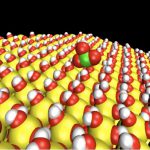 Mineral surfaces are reactive centres for gases solutes and water. The research of JF Boily focuses on understanding the mineral/gas and mineral/water interfaces, and study these using vibrational spectroscopy and XPS, and connect it with theory using DFT and molecular dynamics simulations. Mineral surfaces are reactive centres for gases solutes and water. The research of JF Boily focuses on understanding the mineral/gas and mineral/water interfaces, and study these using vibrational spectroscopy and XPS, and connect it with theory using DFT and molecular dynamics simulations. |
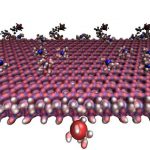 M Holmboe’s research focuses on the properties of sheet silicate minerals and their surface chemistry. A particular focus is the swelling of clays caused by intercalation of water, and this is studied using XRD, and simulated using molecular dynamics. M Holmboe’s research focuses on the properties of sheet silicate minerals and their surface chemistry. A particular focus is the swelling of clays caused by intercalation of water, and this is studied using XRD, and simulated using molecular dynamics. |
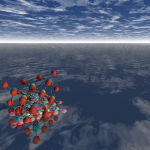 The reactivity of different surface motifs on minerals can vary by several orders of magnitudes, making it difficult to get atomic level information from studying bulk reactivities of mineral surfaces. CA Ohlin focuses on using discrete metal-oxide clusters with constrained structures as models for mineral surface features, and these can be studied in solution using heteronuclear NMR. Another particular focus is the synthesis and study of novel polyoxoniobates and -tantalates. The reactivity of different surface motifs on minerals can vary by several orders of magnitudes, making it difficult to get atomic level information from studying bulk reactivities of mineral surfaces. CA Ohlin focuses on using discrete metal-oxide clusters with constrained structures as models for mineral surface features, and these can be studied in solution using heteronuclear NMR. Another particular focus is the synthesis and study of novel polyoxoniobates and -tantalates. |
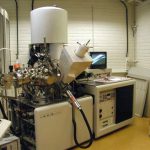
XPS has a long history in Sweden, and is a powerful method for probing surface chemistry. Cryo-XPS extends the capabilities to studying frozen solutions, providing a sensitive and element-specific method for probing solution chemistry in situ. A Shchuchkarev focuses on the application of ultra-high vacuum techniques, mainly X-ray Photoelectron Spectroscopy, to study processes occurring at the solid-solution interface: adsorption, precipitation, dissolution, corrosion, etc., and their influence on the biogeochemical cycling of the elements. A new instrument will be installed in 2023.
|
|
S Sjöberg’s research is focusing on surface complexation modelling utilising models that include electrical double layer theories which allow for mechanistic multilayer, multisite descriptions of the solid-water interface. The coordination of metals and metal complexes are studied in systems comprising inorganic particles like metal(hydr)oxides, clay minerals, and apatites.
M Yeşilbaş research the aquatic (geo) chemistry of the planet Mars and the Icy Worlds in our solar system, focusing on extreme environments on Earth using vibrational spectroscopy. Dr. Yeşilbaş bridges the laboratory analyses with martian orbit data from the Compact Reconnaissance Imaging Spectrometer of Mars (CRISM) to search for life beyond Earth.
|
E Björn’s research is focused on studies of chemical and biological processes of metal compounds in ecosystems and biological systems. An important area of focus is the study biogeochemical processes of mercury (Hg) in aquatic and terrestrial ecosystems. The research program aims to both understand such processes at the molecular level and to establish their importance in natural environmental systems.

